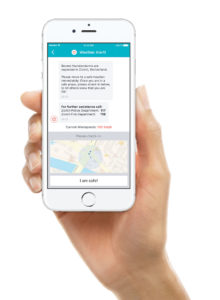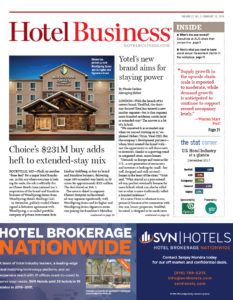SAN FRANCISCO—The past year has seen its fair share of crisis situations—hurricanes, earthquakes, mudslides, wildfires and active-shooter incidents were an ever-present reality of the U.S. news cycle. And hotels are not immune to the impact of these events. As such, it’s imperative to have protocols in place for crisis management—including a technology solution.
As part of a well-thought-out crisis management plan, hotels should assess their risk for certain scenarios; make sure the hotel is up-to-date and covered on structural assurances and insurance policies; assemble the appropriate supplies, such as flashlights, first-aid kits, etc.; train employees on their roles during these situations; ensure an internal communications tool enables workers to have access to the best information; and analyze the effectiveness of the plan after it is put into action.
“Centralized communication and immediate communications are two of the major hurdles when trying to communicate urgent information to everybody,” said Corey McCarthy, VP of marketing, Beekeeper, a digital workplace app. She noted that 80% of hotel workers don’t have a computer or an email address, which makes communication difficult even in the best of situations. By instituting a digital workplace app, “you have immediate access to each non-desk shift worker.”
And that can be critical in life-or-death situations. If a hotel does have an active shooter on property, and a worker is nearby, that worker can send an alert via the system. “Time is of the essence in situations like that,” McCarthy said.
Some owners and operators are wary about tools that enable workers to send unfiltered messages. McCarthy referenced one management company that used a moderation tool within the dashboard that automatically flagged messages with certain words. An administrator then reviewed the messages. “What they found is that overwhelmingly people are incredibly professional, and there are more benefits than issues,” she said.
The tool can also be useful in more-routine crisis situations, like a hurricane or snowstorm. “As employers are crisis planning, the dashboard within Beekeeper gives them the opportunity to collect predetermined messages for different levels of foreseen emergencies,” McCarthy explained. “In South Florida, you could have a hurricane protocol prepopulated and ready to go at the push of a button. You can have the same protocol for a terrorist attack, earthquake, power outage—anything.”
The tool also allows for workers to send feedback to the prepopulated messages. “If there’s an earthquake, you could have another security protocol that says, ‘Are you safe?’” McCarthy said. “Those responses can be tracked real time in the dashboard, and the dashboard could be accessed from remote users too. There could be an administrator in a different location sending the messages, while boots on the ground at the property are actively dealing with the emergency.
“The prepopulated messages have a confirmation mechanism,” McCarthy continued. “One hotel in Florida was using the system during the hurricane, and they would send out a push campaign alerting everybody to when the hotel would be open and when they would come back to work. The push campaign was attached to a read receipt, so the hotel could see who had seen the messages. They could then find another way to reach out to folks if they hadn’t been able to connect over the platform.”
In the future, McCarthy said, the next step for crisis management tools is to better integrate internal communication tools with those that reach guests at the property. HB


